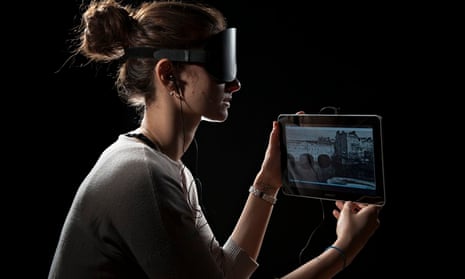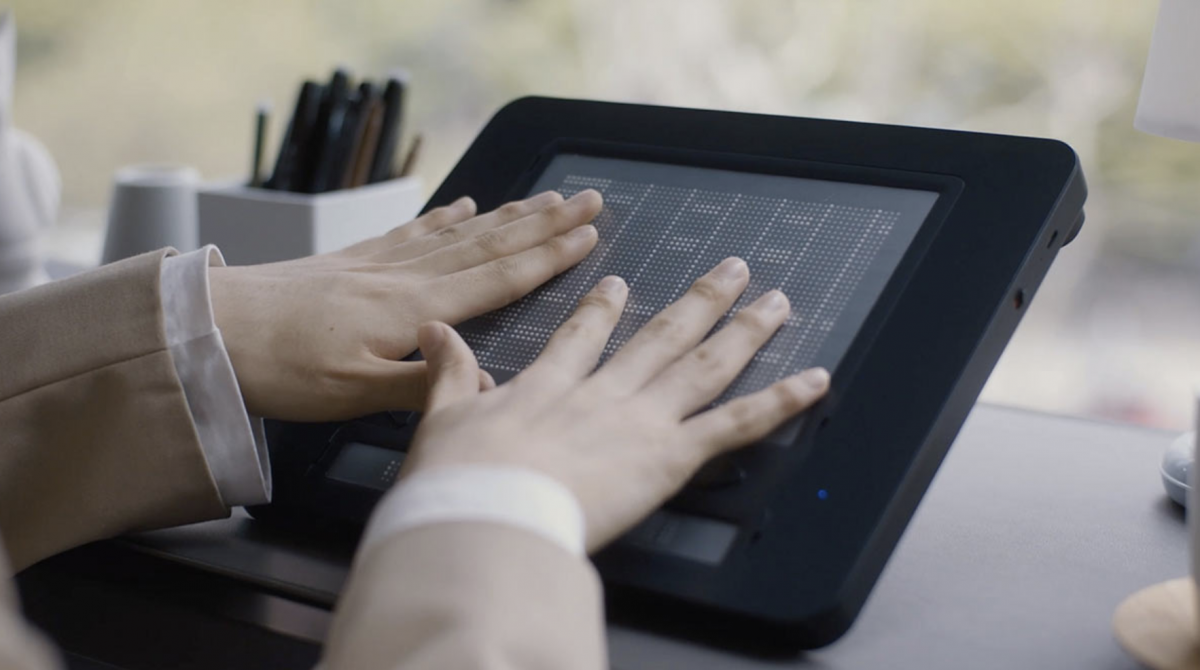Assistive Technology for the Blind: Innovations to Transform Lives
Wiki Article
Empowering Independence With Assistive Innovation for the Blind
The assimilation of assistive technology right into the lives of people with visual disabilities stands for a significant innovation in promoting self-reliance and self-sufficiency. From cutting-edge screen readers to sophisticated clever canes, these tools not just boost daily navigation and communication however additionally encourage customers to involve meaningfully in various elements of life. As we check out the myriad advantages and real-world applications of these innovations, it comes to be crucial to analyze the underlying elements that add to their efficiency and the capacity for future growths in this crucial area.Introduction of Assistive Modern Technology

The advancement of assistive modern technology is based in concepts of inclusivity and empowerment. Advancements in software program, equipment, and sensory improvements supply customers with alternatives customized to their certain requirements. From screen readers that convert message to speech, to responsive tools that communicate info via touch, these devices change the way individuals involve with their environments.
Along with functional applications, assistive innovation fosters better social incorporation and involvement in different sectors, consisting of education and learning and employment (AI-powered visual aids). As r & d proceed to progress, the potential for assistive modern technology to additionally enhance the lives of aesthetically impaired people stays promising, leading the way for an extra equitable culture where everybody can grow
Sorts Of Assistive Devices
A range of assistive devices have actually emerged to sustain people with visual impairments, each created to meet certain needs and improve daily performance. These tools range from low-tech remedies to state-of-the-art developments, providing varied options for customers.Low-tech gadgets consist of magnifiers and large-print materials that help in analysis and writing. Braille tools, such as Braille slates and stylus pens, allow responsive analysis and communication. Positioning and movement help, like white walking canes, help customers browse their atmosphere securely.
On the higher end of the spectrum, electronic magnifying systems and display readers use substantial assistance. Digital magnifiers allow individuals to enlarge text and photos on displays, while screen readers convert electronic web content right into synthesized speech, assisting in accessibility to details on mobile phones and computer systems.
Smart device applications additionally play a critical role, offering functions like message recognition and navigating support. Wearable innovation, such as smart glasses furnished with augmented fact, is becoming an encouraging tool to improve situational understanding.
Advantages of Assistive Modern Technology
The combination of assistive innovation dramatically improves the lifestyle for people with visual impairments. These innovations encourage customers by advertising self-reliance, allowing them to navigate their atmospheres better and do everyday tasks with greater convenience. Display visitors and magnification software permit individuals to access electronic details, cultivating specialist and academic opportunities that might have formerly been out of reach.In addition, assistive tools such as clever walking sticks and GPS applications supply real-time navigation aid, improving wheelchair and safety. This raised autonomy not just improves self-worth but additionally encourages social involvement, allowing customers to take part even more fully in their areas.
Assistive innovation also promotes communication, helping customers get in touch with others through voice acknowledgment and text-to-speech applications. This capability is vital for keeping relationships and accessing critical information.
Additionally, the customization choices offered with numerous assistive modern technologies make sure that individuals can tailor tools to their details requirements, better boosting functionality and efficiency. Generally, the benefits of assistive innovation for people with aesthetic impairments are extensive, promoting a much more comprehensive culture where everyone can pursue their aspirations and goals.
Situation Research Studies and Success Stories
Highlighting the transformative effect of assistive innovation, various study show exactly how individuals with aesthetic problems have actually efficiently integrated these tools into their daily lives. One engaging instance entails an university student who made use of display analysis software to browse academic materials and on-line resources efficiently. This technology not just facilitated her education and learning Screen readers for the blind however additionally improved her confidence in joining discussions and team jobs.One more study includes a professional that utilizes a mobile phone application made for navigation and item acknowledgment. By using this application, he has reclaimed autonomy in both his individual and job atmospheres, permitting him to commute independently and involve with colleagues better.
In addition, a retiree shared her experience with braille e-readers, which allowed her to access a vast variety of literary works and stay gotten in touch with her neighborhood via book clubs.
These success stories highlight the essential duty of assistive technology in fostering self-reliance, boosting lifestyle, and promoting social assimilation for people with visual disabilities (Braille displays and notetakers). By welcoming these ingenious devices, customers can get over challenges and seize opportunities that add to their personal and expert satisfaction

Future Patterns in Assistive Technology
Technology in assistive technology is positioned to redefine the landscape of assistance for individuals with aesthetic impairments. Arising trends stress the integration of fabricated intelligence (AI) and artificial intelligence, which enhance the capability of devices that help with navigating and details availability. For instance, AI-driven applications are currently with the ability of interpreting aesthetic data in real-time, enabling customers to involve with their atmosphere much more separately.Moreover, the growth of wearable modern technology is advancing quickly. Smart glasses equipped with enhanced fact (AR) can offer audio summaries of environments, transforming exactly how users connect with public areas. These tools not only promote freedom but likewise foster social inclusion.
Furthermore, the Internet of Things (IoT) is making homes smarter, enabling for seamless connection in between assistive devices and daily appliances. This connection empowers users by making it possible for voice-activated controls and computerized reactions tailored to private needs.
Verdict
Finally, assistive innovation plays a pivotal duty in equipping people with aesthetic disabilities by boosting their self-reliance and interaction with their surroundings. The varied series of tools and applications available not only promotes navigating and interaction however additionally advertises social assimilation and chances for personal and professional growth. As developments proceed in this field, the potential for boosting the lifestyle for those with aesthetic problems will increase, cultivating greater freedom and empowerment.
Report this wiki page